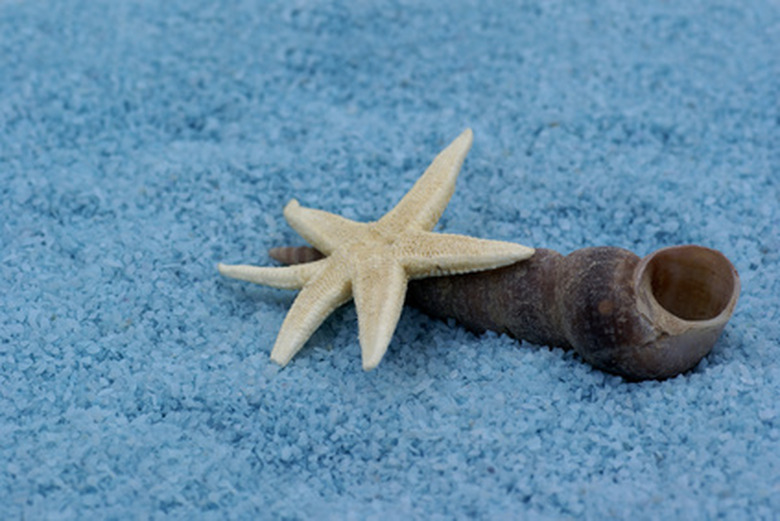How Salt Affects Living Organisms
Salt is inexpensive and is found on nearly every continent in the world. It is indispensable to some living creatures, while also proving deadly for others. Salt has a myriad of important uses and was once even used as a form of currency in ancient Rome. The relationship between salt and water is perhaps one of the greatest balancing acts in all of nature, a partnership that has endured for millions of years.
Identification
Identification
Salt is a common name derived from early forms of the English language, but the proper name is sodium chloride or halite. Salt in its raw form is colorless and breaks up into cubes. An important physical property of halite is its water solubility, allowing for the preservation of food and numerous other chemical applications. The Mineral Information Institute (MII) reports that about one-fifth of the world's salt is produced in the United States, with other leading producers including China and Germany.
Salinity
Salinity
Salinity refers to the amount of salt mixed into water. Salinity is expressed as the amount of salt per 1,000 grams of water. According to the U.S. Office of Naval Research (ONR), the average ocean salinity is 35 ppt or parts per thousand, which means that for every 1,000 grams of water, there are 35 grams of salt. The ONR also reports that most of the salt in the ocean comes from rain, rivers and streams that wash sodium chloride into larger bodies of water. Other major sources of salt in the ocean include undersea volcanoes and hydrothermal vents. The term "brackish water" refers to bodies of water where freshwater and ocean water mix. In these areas, the average salinity ranges from 0.5 ppt to 17 ppt.
Salt and Osmosis
Salt and Osmosis
Water has a natural tendency to balance itself. This is due largely to a natural process called osmosis, in which water flows through a semi-permeable membrane, from an area of high concentration to an area of lower concentration. This is why most animals in saltwater environments have about the same amount of salinity inside their bodies as the water outside them. For this same reason, nearly all mammals, including humans, cannot drink salt water. Salt dehydrates the body, impeding the proper function of vital organs. When excess salt enters your body, the kidneys attempt to flush it out as quickly as possible, causing you to lose more water than you are taking in.
Salinity and Plants
Salinity and Plants
Freshwater plants are widely intolerant of soil salinity. Salt is detrimental to the growth and development of agricultural crops because it restricts the uptake of nutrients at the root. The U.S. Department of Agriculture claims that soil salinity is responsible for reducing crop yields by as much as 25 percent in the United States. However, recent developments by the Agricultural Research Service have created new strains of wheatgrass that can withstand higher concentrations of salt by using genetic markers borrowed from saline-resistant plants.
Social and Economic Uses
Salt has a variety of uses for industrial applications and human consumption. Salt is used in nearly every country as seasoning for food preparation, but industrialized nations have more complex consumption patterns. According to the Mineral Information Institute (MII), over 40 percent of salt in the United States is used for the production of chlorine and caustic soda. Surprisingly, another 40 percent is used to de-ice roads during winter months. Although salt is vital to living organisms on the biological level, these figures from (MII) reveal that the relationship between humans and salt is much more complicated.
Cite This Article
MLA
Blackmon, Frederick S.. "How Salt Affects Living Organisms" sciencing.com, https://www.sciencing.com/salt-affects-living-organisms-6581850/. 24 April 2017.
APA
Blackmon, Frederick S.. (2017, April 24). How Salt Affects Living Organisms. sciencing.com. Retrieved from https://www.sciencing.com/salt-affects-living-organisms-6581850/
Chicago
Blackmon, Frederick S.. How Salt Affects Living Organisms last modified March 24, 2022. https://www.sciencing.com/salt-affects-living-organisms-6581850/
